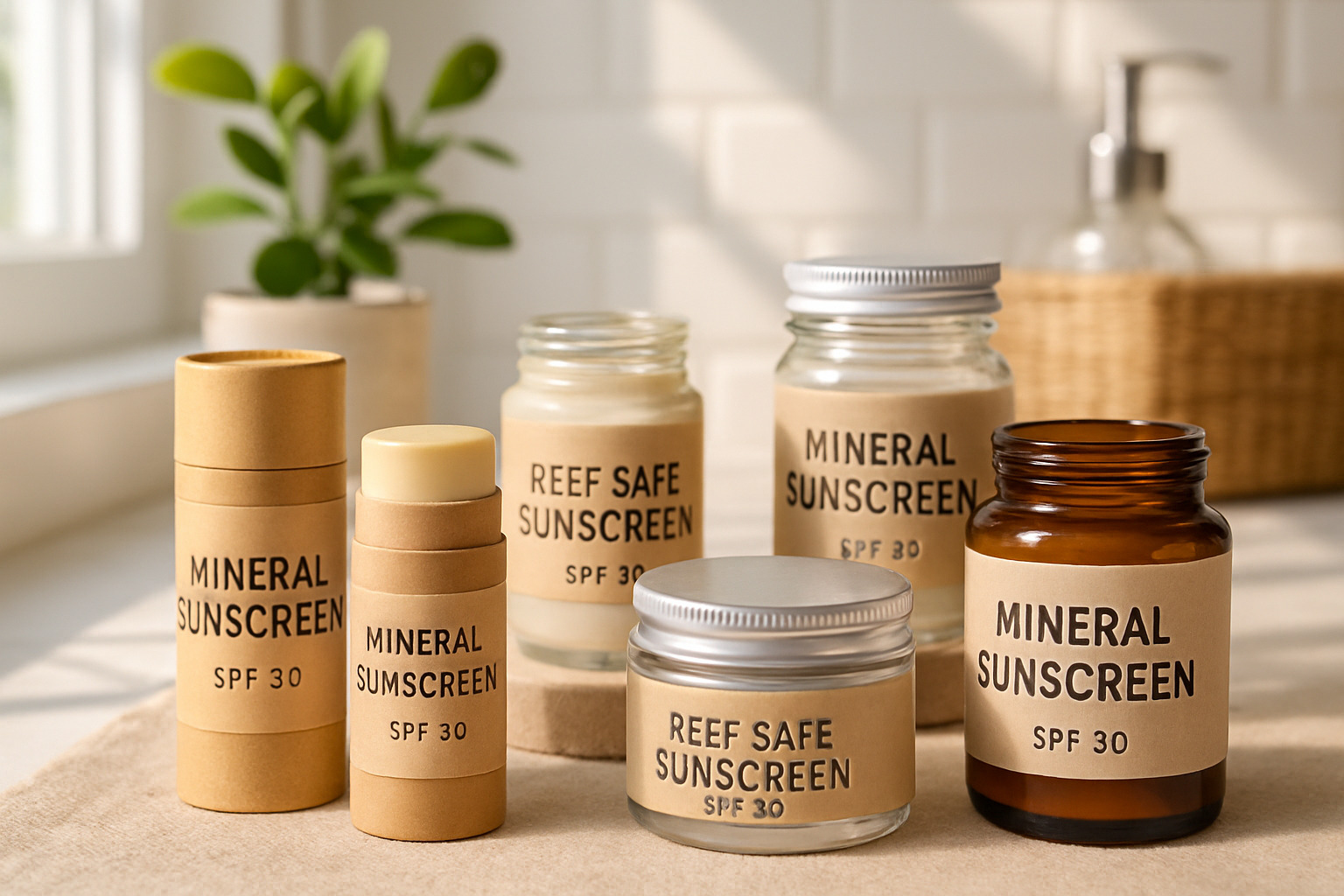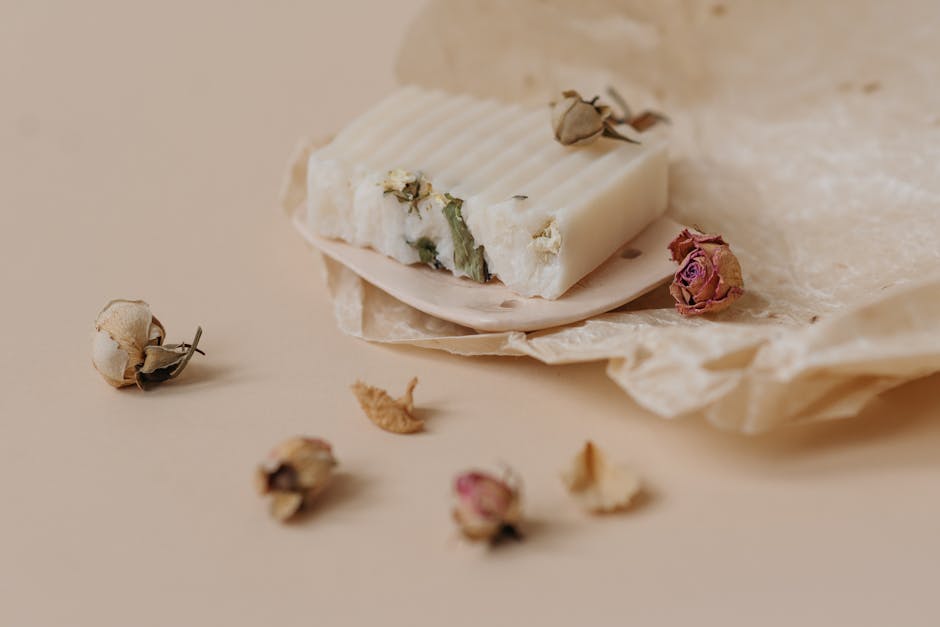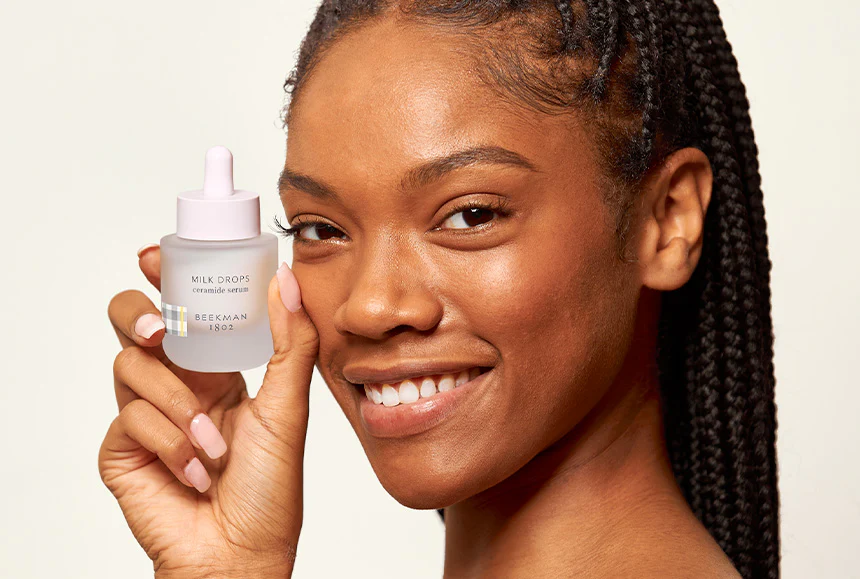Why Zero Waste Skincare Matters for Your Skin and the Planet
Zero waste skincare refers to beauty products designed with minimal or completely plastic-free packaging that can be reused, recycled, composted, or refilled without creating waste.
If you’re looking to shop for zero waste skincare, here’s what you need to know:
- Look for: Glass jars, aluminum containers, compostable paper packaging, refillable systems
- Best brands: Look for companies offering solid bars, refillable containers, and plastic-free packaging
- Key benefits: Reduces plastic pollution, often uses higher-quality ingredients, saves money long-term
- Getting started: Start with simple swaps like cleansing bars and solid moisturizers
Every time you wash your face or apply moisturizer, you might not think about what happens to the packaging afterward. But the numbers tell a shocking story: the beauty industry produces more than 120 billion units of packaging annually, with less than 5% of all plastic being recycled.
That plastic cleanser bottle you just finished? It could take hundreds of years to break down, if it ever does completely.
Zero waste skincare isn’t just a trend – it’s a necessary response to our planet’s waste crisis. By choosing products with sustainable packaging and formulations, you’re not only caring for your skin but making a meaningful environmental impact.
As one zero waste brand founder puts it: “Skincare is an essential part of a wellbeing routine that promotes confidence and happiness” – and it can absolutely coexist with zero waste principles.
Many consumers are surprised to find that zero waste options often deliver better results than conventional products. Without cheap fillers and with higher concentrations of active ingredients, these formulations frequently outperform their plastic-packaged counterparts.
Sustainable skincare brands have prevented hundreds of thousands of plastic bottles from reaching landfills, while eco-conscious companies produce minimal trash across their entire operations.
Ready to make the switch? The journey to plastic-free pores starts with understanding what to look for and which brands truly deliver on their promises.

Zero waste skincare terms you need:
– no rubbish skincare
– plastic free cosmetics
– plastic free skincare brands
Zero Waste Skincare 101: Why It Matters
Ever wonder what happens to all those pretty plastic bottles once you’ve squeezed out the last drop of serum? The truth might make you wince. The beauty industry produces over 120 billion packaging units annually, with less than 5% of plastic actually being recycled. The rest? It’s clogging landfills, floating in oceans, and even breaking down into microplastics that find their way into our food, water, and bodies.
When I first learned these statistics, I couldn’t look at my bathroom shelf the same way again.
Zero waste skincare isn’t just another trend – it’s a necessary response to an environmental crisis that’s been building for decades. Traditional beauty products are surprisingly wasteful: most are 60-80% water (yes, you’re paying premium prices for… water), while solid alternatives eliminate that waste entirely. Not only does this reduce plastic packaging, but it also slashes carbon emissions from shipping what amounts to heavy bottles of water around the globe.
The environmental footprint stretches far beyond just empty bottles. There’s the fossil fuel extraction for plastic production, energy-intensive manufacturing, and global shipping networks – all contributing to beauty’s substantial climate impact. According to scientific research on beauty’s plastic problem, the industry’s environmental impact is reaching a critical point.
What is Zero Waste Skincare?
At its heart, zero waste skincare accepts a cradle-to-cradle philosophy. This means products are thoughtfully designed with their entire lifecycle in mind – from how ingredients are sourced to what happens after you’ve used the last drop.
True zero waste skincare follows a simple but powerful hierarchy:
- Refuse unnecessary products and excessive packaging
- Reduce consumption to what you truly need
- Reuse containers and packaging whenever possible
- Recycle what can’t be refused, reduced, or reused
- Rot (compost) whatever remains
The most effective zero waste skincare brands design with carbon-neutral principles, often incorporating upcycled ingredients (like coffee grounds from local cafes), compostable packaging, or infinitely recyclable materials like aluminum and glass. For more options, explore Plastic-Free Cosmetics that align with these principles.
Conventional Beauty’s Footprint
Your typical drugstore moisturizer hides a surprising environmental cost. Beyond the obvious plastic packaging, many conventional products contain:
Petroleum-derived ingredients sourced from fossil fuels, hidden microplastics lurking in formulations, excessive water content requiring chemical preservatives, and multiple layers of non-recyclable packaging that serve no purpose beyond marketing.
The difference between conventional products and their solid counterparts is striking:
| Product Type | CO₂ Emissions | Plastic Waste | Water Content |
|---|---|---|---|
| Liquid Cleanser (8oz) | 5.5x higher | 1 plastic bottle | 70-80% water |
| Solid Cleansing Bar | Significantly lower | Zero plastic | 0% water |
| Bottled Moisturizer | 3.8x higher | 1-2 plastic containers | 60-70% water |
| Solid Moisturizer Bar | Minimal | Zero plastic or compostable | 0% water |
The numbers speak volumes – zero waste skincare dramatically reduces environmental impact while actually delivering more concentrated ingredients to your skin. In many ways, it’s a return to beauty wisdom that existed long before plastic bottles dominated our shelves.
When you choose a solid shampoo bar over a plastic bottle, you’re not just making a personal choice – you’re casting a vote for the kind of world you want to live in. One where beauty doesn’t come at the planet’s expense.
How to Shop Zero Waste Skincare Like a Pro

Navigating the growing world of sustainable beauty can feel overwhelming at first. Don’t worry—I’ve been there too! Shopping for zero waste skincare requires a slightly different mindset, but once you know what to look for, you’ll be filling your bathroom shelf with planet-friendly products in no time.
Decode Packaging & Symbols
When I first started my zero waste skincare journey, packaging was my north star. The hierarchy is pretty simple when you break it down:
The best option is always no packaging at all—those lovely naked cleansing bars sitting proudly on a shelf. Next up are beautiful glass jars and aluminum tins that you can reuse for years (I use old face cream jars to store homemade masks!). Refillable systems are gaining popularity too—brands that let you send back empty containers or offer concentrated refill pouches that use minimal materials.
Look for home compostable certification symbols on paper packaging—these can break down in your backyard compost bin! Aluminum is a superstar material since it can be recycled infinitely without losing quality. Glass is another winner for the same reason, plus it’s beautiful on your bathroom shelf.
Many brands now include take-back schemes with “Return to us” labels, making recycling even easier. Keep an eye out for circular arrows, compost symbols, or clear “plastic-free” labeling that helps you identify truly zero waste skincare options at a glance.
Ingredient Checklist for Zero Waste Skincare
Packaging is just half the story—what’s inside matters just as much for true sustainability. The most innovative zero waste skincare brands focus on waterless formulations like solid bars, powders, and concentrates. These not only eliminate the need for plastic bottles but also deliver more potent ingredients since they’re not diluted with water.
Plant-based oils and butters form the backbone of most quality zero waste formulations. I’ve been amazed by brands using upcycled ingredients like coffee grounds that would otherwise be thrown away—they make fantastic exfoliants! Locally sourced botanicals reduce transportation emissions while supporting regional farmers.
Be wary of products listing water as the first ingredient—this usually means you’re paying premium prices for a diluted formula that requires synthetic preservatives. Instead, look for preservative-free systems or products using natural preservation methods. Whenever possible, choose palm oil-free and cruelty-free certified options to ensure your skincare isn’t contributing to deforestation or animal testing.
Spotting Greenwashing
As zero waste skincare has grown more popular, so has the unfortunate practice of greenwashing. I’ve learned to be skeptical of vague claims like “eco-friendly” without specifics to back them up.
Authentic zero waste brands aren’t afraid to get specific. They’ll proudly display third-party certifications like Leaping Bunny or 1% For The Planet. Many publish their Life Cycle Assessments (LCAs) openly on their websites, showing the environmental impact of their products from creation to disposal.
Watch out for companies that make a big deal about reducing some plastic while still using excessive packaging elsewhere in their line. True sustainability leaders are transparent about both their achievements and ongoing challenges—nobody’s perfect, and honest brands will acknowledge where they still need to improve.
The best zero waste skincare brands provide clear end-of-life instructions for packaging. They don’t just say “recyclable” (which can be misleading if the item isn’t actually accepted by most recycling programs); they tell you exactly how to properly dispose of or reuse each component.
For more guidance on making eco-conscious beauty choices, check out our guides to Eco-Friendly Cosmetic Products that go beyond just skincare.
Product Round-Up: Low-Waste Alternatives by Category

Ready to fill your bathroom shelf with planet-friendly options? Let’s explore the wonderful world of zero waste skincare products by category. The beauty of this approach is swapping bottles for bars, diluted formulas for concentrates, and single-purpose products for multitasking wonders.
Zero Waste Skincare Cleansers
Cleansers are the perfect entry point into your zero waste skincare journey. They’re used daily and make a huge difference in your plastic footprint.
Those gorgeous solid cleansing bars aren’t just pretty—they’re powerhouses! They typically last 2-3 times longer than liquid cleansers since they’re not diluted with water. Look for pH-balanced formulas (ideally between 4.5-5.5) that won’t disrupt your skin barrier. If you have oily skin, clay-based bars work wonders, while cream-based options pamper dry complexions.
Don’t forget to pair your bar with a bamboo or wooden soap dish for proper drainage—this simple step extends your bar’s life significantly!
Cleansing powders are another fantastic option. These clever little powders transform with a splash of water into gentle exfoliating cleansers. Most come in paper, glass, or aluminum packaging, making them truly zero waste skincare heroes. The best part? They’re incredibly concentrated, so a tiny amount goes a long way. Many can double as masks when left on longer—talk about versatile!
For makeup removal, oil cleansers in glass bottles with aluminum caps make perfect sense. More brands now offer refill programs where you can send back your empty bottle or purchase concentrated refill pouches. When shopping, notice the labels too—recycled paper or minimal labeling is a sign of thoughtful design.
Toners & Mists
Toners and facial mists have undergone a zero waste revolution. Glass spray bottles lead the pack—many brands now offer concentrated refill systems or take-back programs where they sterilize and reuse your empties.
Have you tried hydrosol tablets yet? These innovative little wonders allow you to create fresh toner at home. Simply drop a concentrated tablet into your reusable bottle, add filtered water, and voilà! You’ve eliminated shipping water (which is heavy and carbon-intensive) and avoided another plastic bottle.
For those who travel frequently, aluminum bottles provide a lightweight, durable alternative to glass. They’re infinitely recyclable and increasingly used in refillable systems. Brands like Dew Mighty have pioneered concentrated formulas that you dilute at home, dramatically reducing packaging waste and shipping emissions.
Moisturizers & Serums
The moisturizer and serum category has seen incredible innovation in the zero waste skincare space.
Solid moisturizer bars, typically wrapped in compostable paper, deliver concentrated hydration without the jar. Apply them directly to damp skin or warm between your palms first. The beauty of these bars is their versatility—different oil blends cater to various skin types, from dry to oily.
If you prefer traditional creams, look for glass jars with metal lids (rather than plastic) and brands offering refill programs. Some forward-thinking companies now provide compostable refill pouches that significantly reduce packaging waste.
For targeted treatments, solid serum sticks deliver concentrated actives in a waterless format, often housed in compostable paper push-up tubes. These work beautifully when applied to slightly damp skin for optimal absorption.
Oil serums in glass droppers remain popular, but with a zero waste twist. Seek out brands that take back and reuse dropper components, or better yet, offer refill vials without the dropper mechanism. Metal caps are always preferable to plastic ones.
Sunscreens & Specialty Care
Sunscreen presents unique challenges in the zero waste world, but solutions are emerging!
Mineral sunscreen sticks packaged in cardboard push-up tubes offer excellent protection without plastic waste. These typically contain reef-safe mineral filters like zinc oxide and titanium dioxide, and apply directly to skin without mess or waste.
Some innovative brands now offer sunscreens in compostable tubes made from plant-based materials. Look for home composting certification (not just industrial), and mineral-based formulas without harmful microplastics.
For those dry patches, chapped lips, and rough cuticles, specialty balms in metal tins provide targeted relief. These multi-purpose healing balms often last months longer than their plastic-packaged counterparts because they’re so concentrated.

Ready to explore more eco-friendly beauty routines? The options grow every day as brands respond to our collective desire for zero waste skincare that works beautifully for both our skin and our planet.
Building Your Personal Zero Waste Routine
Switching to zero waste skincare doesn’t mean throwing out everything you own tomorrow. The most sustainable approach is actually a gradual transition that respects both your skin’s needs and your budget. Let’s break down how to create a routine that works for you.
Beginner 3-Step Routine
The simplest way to start your zero waste skincare journey is with these three essential swaps:
1. Cleanse
Start with a solid cleansing bar – it’s the easiest swap with the biggest impact. These bars last 2-3 times longer than bottled cleansers and come with minimal packaging. Pair it with a compostable cotton cloth that gently exfoliates while you cleanse. Remember to store your bar on a bamboo dish that allows drainage – this extends its life dramatically and prevents waste.
2. Hydrate
Replace your plastic-bottled toner with one in glass packaging. If you have normal to oily skin, a solid moisturizer bar might be perfect for you – they’re concentrated and travel-friendly. For those with drier skin, look for creams or balms packaged in glass with metal lids rather than plastic caps.
3. Protect
Sunscreen is non-negotiable, but plastic tubes aren’t! Try a stick formula in cardboard packaging or a powder SPF in a refillable brush applicator. Add a multi-purpose balm in a metal tin for dry patches, lips, and cuticles – these little tins are infinitely recyclable and the product replaces multiple plastic-packaged items.
Many zero waste skincare brands now offer mini sizes so you can test compatibility before committing. This smart approach prevents the waste that comes from full-size products that don’t work for your skin type.
Advanced Refill System
Once you’ve found products that love your skin (and you love them back), setting up a refill system can save both money and resources:
Subscription Refills
Brands like Plaine Products have prevented over 500,000 plastic bottles from hitting landfills through their innovative refill programs. Many offer discounted subscriptions and ship in compostable mailers. The savings add up – both environmentally and financially.
Bottle Take-Back
Save those empty containers! Many zero waste skincare companies have take-back programs that ensure proper recycling of components that might be challenging to recycle locally. Some even offer store credit for returned packaging, creating a true circular economy.
Loyalty Rewards
The brands most committed to sustainability often reward container returns with points, discounts, or even free products after multiple returns. It’s a win-win – you save money, they reduce their footprint, and the planet breathes a little easier.
Our research shows that consumers who commit to refill systems save an average of 12 plastic containers per person annually in skincare alone. That’s a bathroom drawer’s worth of waste prevented!
Disposal & Upcycling Tips
Even the most dedicated zero waste skincare enthusiasts sometimes end up with packaging. Here’s how to handle it thoughtfully:
Home Composting
Those paper boxes and some bioplastics can break down in your home compost bin. Just be sure to remove any plastic windows or stickers first, and follow the brand’s instructions about composting timeframes. Not all compostable packaging breaks down at the same rate.
Proper Recycling
Clean your containers thoroughly before recycling – residual product can contaminate entire batches of recyclables. Remove pumps, droppers, and mixed materials, as these often need to be processed separately. Check your local recycling guidelines since not all facilities accept all materials.
Creative Reuse
Those pretty glass jars make perfect containers for DIY masks and scrubs. Metal tins can store homemade balms or small items like earrings when traveling. Spray bottles can be refilled with homemade toners using simple ingredients like rose water or witch hazel.
Travel Containers
Save those small glass jars and tins for travel-sized portions of your favorite products. They’re TSA-friendly and much more sustainable than buying travel sizes in plastic. Label them clearly with paper tape or chalk markers rather than plastic labels.

The most sustainable routine is one that works for your skin and your lifestyle. Small, consistent changes add up to significant impact over time. For more ideas on creating an eco-friendly beauty routine, check out our dedicated guides.
FAQs about Zero Waste Skincare
Is zero waste skincare safe for sensitive or acne-prone skin?
If you have sensitive or acne-prone skin, you might wonder if zero waste skincare products will work for you—and the answer is a resounding yes! Many people with skin concerns actually find their complexion improves after making the switch.
Why? Zero waste skincare products typically contain fewer preservatives and synthetic ingredients that can trigger reactions. Instead of long ingredient lists full of chemicals you can’t pronounce, these formulations often focus on simple, high-quality ingredients that let your skin breathe and heal.
“My skin feels healthier, smoother and the redness has massively reduced. All in under a month!” shared one customer who switched to a plastic-free routine—a sentiment we hear often at Beyond Beauty Lab.
For best results with sensitive skin, look for fragrance-free options and always patch test new products just as you would with conventional skincare. Brands that specialize in gentle formulations often offer specific product lines designed with sensitive and acne-prone skin in mind.
How do refill, reuse, and recycling programs work?
The beauty of zero waste skincare extends beyond the products themselves to innovative ways companies help you maintain your sustainable routine. Refill and reuse programs typically follow one of these models:
With mail-back programs, you’ll purchase your initial product in durable packaging, use it until empty, then request a prepaid shipping label. After returning your empty container, you’ll receive either a freshly filled product or concentrated refill pouches to use with your original container.
If you prefer a hands-on approach, in-store refill stations let you bring your empty containers to participating shops where you pay by weight or volume for product refills. Some locations even offer container sanitizing services on the spot!
For convenience lovers, subscription refill services allow you to sign up for regular refills on a monthly or quarterly basis. Your empties go back in provided mailers, and fresh product arrives right on schedule—no need to remember to reorder.
The impact of these programs is impressive. According to our research, one leading refill program prevented over 500,000 plastic bottles from reaching landfills through their aluminum bottle return and refill system.
What challenges still exist for brands and consumers?
Despite all the progress in the zero waste skincare movement, we’re still navigating some challenges together.
For brands, creating truly sustainable products means balancing product preservation without traditional preservatives, developing waterless formulations that remain effective, and designing packaging that’s both eco-friendly and maintains product integrity—all while meeting regulatory requirements.
As consumers, we face our own problems: the sometimes higher upfront costs (though products often last longer, making them more economical over time), limited availability in some regions, and the learning curve that comes with using solid products. There are also new storage considerations—that solid moisturizer bar needs to stay dry between uses!
On an industry-wide level, we’re still working toward standardizing refill systems across brands, developing better infrastructure for composting packaging, creating truly circular supply chains, and making zero waste skincare accessible to all income levels.
The encouraging news? Innovation is happening at lightning speed. As one brand founder put it: “The beauty world is ready for less wasteful solutions”—and both brands and conscious consumers like you are driving this positive change forward every day.

Conclusion
The journey to zero waste skincare isn’t just about being trendy—it’s about making thoughtful choices that benefit both your skin and our planet. Throughout this guide, we’ve explored how small changes in your beauty routine can create ripples of positive environmental impact.
As you move forward on your sustainable beauty path, perfection isn’t the goal—progress is. Many of us at Beyond Beauty Lab started with just one simple swap (that cleansing bar that changed everything!) and gradually built more sustainable habits over time.
What matters most is taking that first step. Maybe it’s replacing your plastic-bottled cleanser with a solid bar when it runs out. Or perhaps it’s choosing a glass-packaged moisturizer next time you need a refill. Each choice makes a difference.
The beauty of zero waste skincare is that it often delivers better results while reducing environmental harm. Those concentrated waterless formulas? They’re not just good for the planet—they’re packed with active ingredients that work harder for your skin without the fillers.
When shopping for new products, keep these principles in mind:
Focus on packaging first—glass, aluminum, paper, or naked products are your best bets. Look for concentrated formulas that last longer and reduce shipping emissions. Support brands with refill programs that are creating truly circular systems. And always read beyond the marketing to identify specific sustainability claims backed by third-party certifications.
The most sustainable product is often the one you don’t buy. Use what you have, buy only what you need, and choose wisely when you do make a purchase.
At Beyond Beauty Lab, we believe beauty shouldn’t come at the planet’s expense. We’re committed to helping you steer the growing world of sustainable beauty with honest, practical guidance. Our resources are designed to empower you to make choices that align with both your skincare needs and environmental values.
Ready to deepen your sustainable beauty journey? Explore our Sustainable Beauty Products section for carefully researched recommendations that support both glowing skin and a healthier planet.
Your skincare choices matter—to your health, to the planet, and to future generations. With each sustainable swap, you’re voting for the kind of world you want to live in—one where beauty and environmental responsibility go hand in hand.







